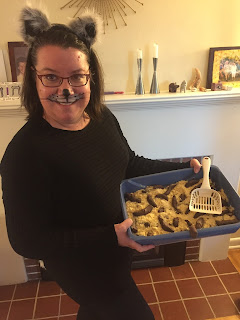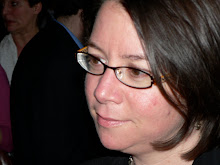In the afternoon we visited a Vietnamese Buddhist temple; we were welcomed by a very friendly and informative young man in grey robes, took off our shoes to briefly admire the gorgeous sanctuary, heard a brief biography of the Buddha, and spent most of our time in the amazing gardens above the temple, full of statues and murals. The rabbi had prepared a scavenger hunt to find all the Buddhist symbols and learn what they mean. It was fascinating!
I went along as a chaperone, which was very easy, and gave me the opportunity to see Jordan among his Temple classmates. I observed that the kids sorted themselves into three clear groups: (1) the girls, (2) the boys, and (3) the Billings and SJCS kids, which was a mixed-gender group. This grouping is only a little oversimplified: there was one boy who moved back and forth between groups 2 and 3, and one pair of friends that was mostly on their own. But it was easy to observe. In this photo, they are bunched together but still basically in these three groups.
I didn't pay much attention to the group of girls, but I observed the boys' group, and it was fascinating to me. They had a very different style than Jordan and his friends. They presented as more sportsy, more consciously stylish in their clothes and hairstyles, and a little rougher in terms of their language and demeanor. They were perfectly well-behaved - all the kids were extremely pleasant all day - but they seemed a little socially precocious to me, as if they were acting a couple years older than they are. Now I have to admit the possibility that their parents might think my kid and his friends are acting young for their age... we don't get to say which is the "right" way to be! But what I can say is that groups 2 and 3 were distinctly different. No wonder they don't hang out together; even though everyone is perfectly nice to everyone else, they don't suit each other.
This was extremely informative for me, because I often have the impulse to encourage Jordan to connect with the other eighth graders at Temple, with the idea that this could be a valuable social group for him outside of school. What I saw of these different groups taught me that Jordan already knows who his people are. Group 3 is his people, and group 2 is really not his people generally speaking (though there are a couple kids in there that he enjoys one-on-one). He is doing great and I should cheerfully keep my mouth shut.














